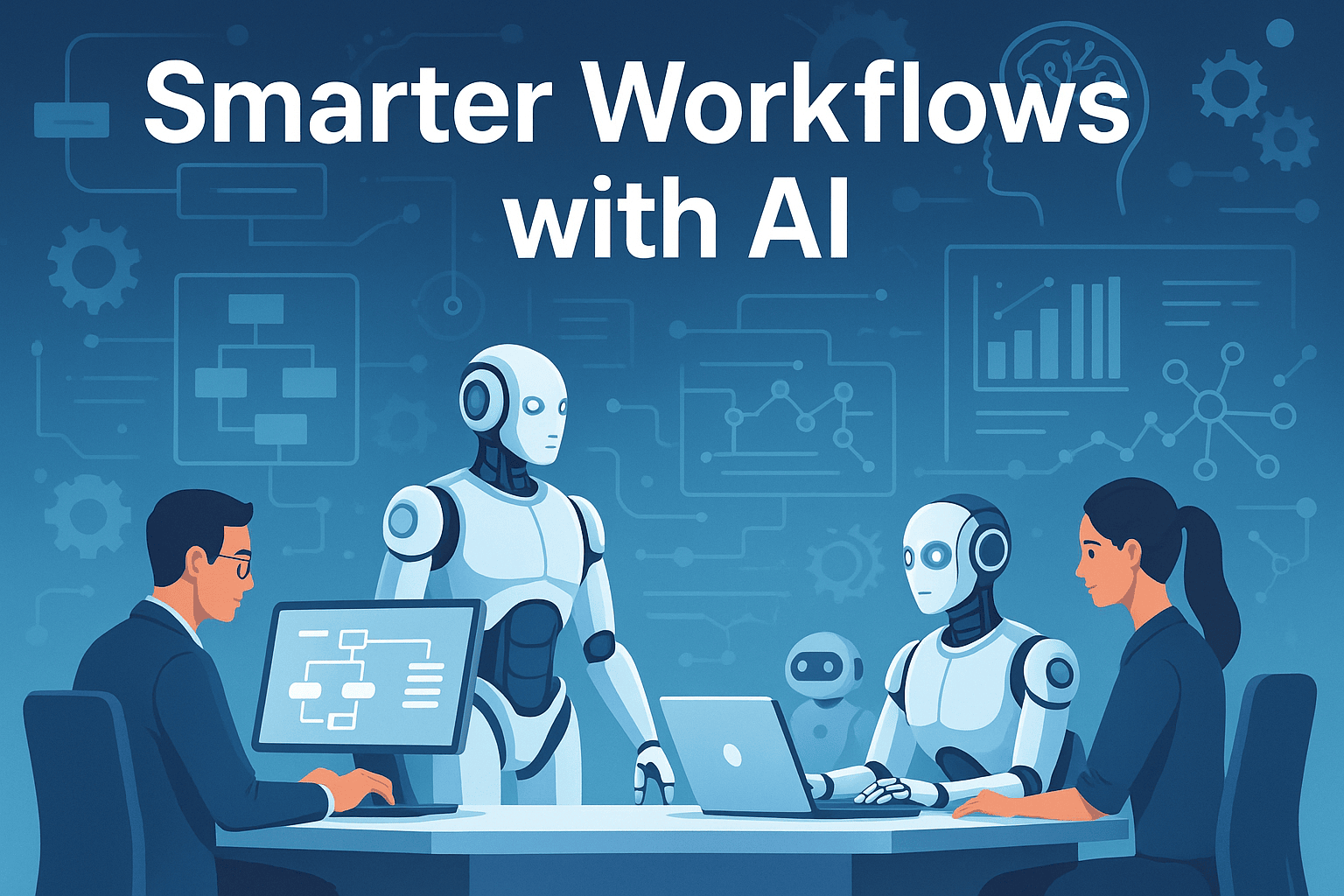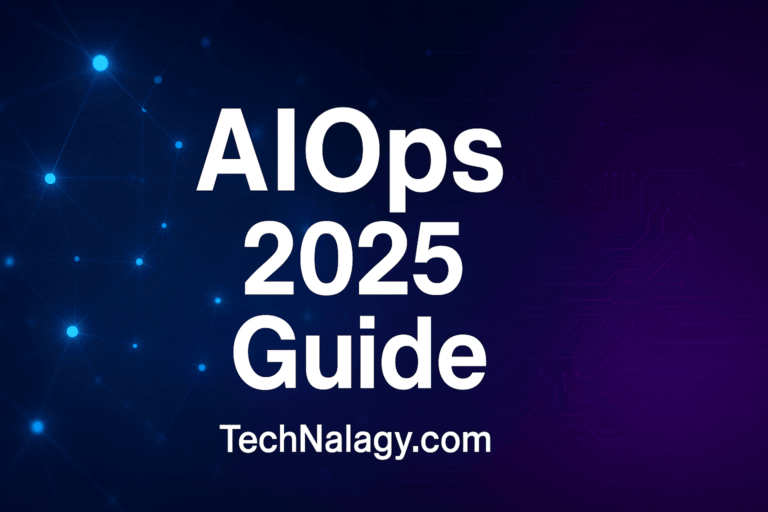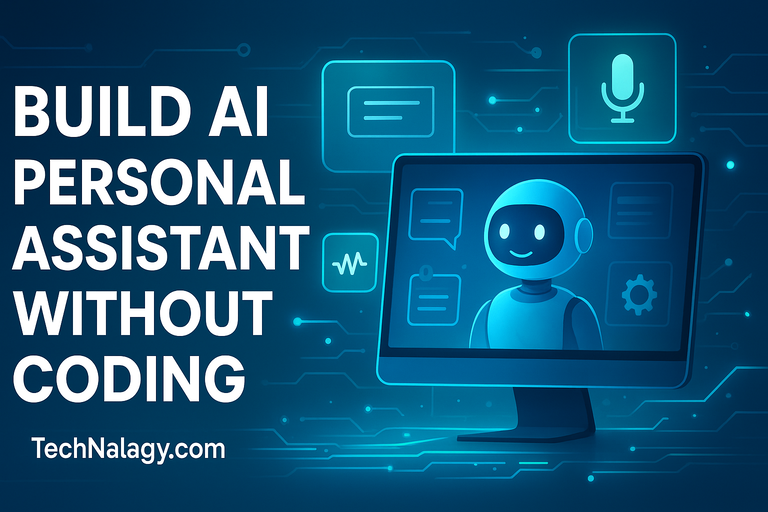AI Workflow Automation Tools Explained: What They Are and How to Use Them
In today’s fast-paced digital economy, efficiency isn’t a luxury—it’s a necessity. Businesses across every industry are turning to AI workflow automation tools to handle repetitive processes, boost productivity, and free up valuable time for strategic tasks. But what exactly are these tools? How do they work? And more importantly, how can you use them effectively?
In this comprehensive guide, we’ll break down everything you need to know about AI workflow automation tools, including how to implement them, their benefits, common challenges, and which tools are leading the market in 2025.
Table of Contents
What Are AI Workflow Automation Tools?
AI workflow automation tools are platforms or applications that use artificial intelligence to automate and optimize business processes. Unlike traditional automation systems that rely on static rules, these tools are intelligent. They can analyze data, make decisions, learn from patterns, and continuously improve the efficiency of your operations.
These tools combine technologies such as:
- Machine Learning (ML) – to learn from data and make predictions
- Natural Language Processing (NLP) – to interpret human language
- Computer Vision – to understand images and documents
- RPA (Robotic Process Automation) – for task-based automation
- Generative AI – to create content or make decisions dynamically
Use Case Examples:
- Automatically processing invoices with AI-based OCR
- Using AI chatbots to handle support tickets
- Analyzing job applications and shortlisting top candidates
- Automatically routing leads in a CRM based on AI scoring
- Triggering workflows from voice commands or natural language input
Benefits of Using AI Workflow Automation Tools
Adopting AI workflow automation tools offers significant benefits across various departments:
1. Time and Cost Savings
AI-powered tools reduce the need for manual input, significantly cutting down on labor hours and operational costs. Routine tasks that once took hours can be completed in seconds.
2. Improved Accuracy
Human error is a common issue in manual processes. AI tools use data-driven logic and precision to improve accuracy in everything from data entry to email responses.
3. Enhanced Productivity
By automating repetitive tasks, your team can focus on higher-value activities like innovation, customer engagement, and strategy.
4. Real-Time Decision Making
AI can analyze large datasets instantly to support smarter, faster business decisions without waiting for manual reporting.
5. Scalability
Whether you’re a startup or an enterprise, these tools grow with you. As business processes become more complex, AI can handle the increased workload seamlessly.
Popular AI Workflow Automation Tools in 2025
Here are some of the best AI workflow automation tools currently used by businesses in 2025:
1. UiPath
A leader in the RPA space, UiPath integrates AI into traditional automation for more adaptive workflows. Its AI Center enables integration with ML models for intelligent document processing and decision-making.
2. Zapier + AI Copilot
Zapier is known for its no-code automation. With AI Copilot, users can now build automated workflows simply by describing what they want in plain English.
3. Kissflow
Ideal for small and medium businesses, Kissflow uses AI suggestions to help you create, manage, and optimize business processes without coding.
4. Make (Integromat)
This visual automation platform now offers AI integrations, allowing you to build multi-step workflows using AI models, NLP triggers, and more.
5. Lindy
A newer platform offering AI assistant builders that can automate personal and business tasks—think AI schedulers, email responders, and CRM managers.
6. Otio.ai and Tray.io
These platforms enable complex integrations and AI workflow orchestration for larger enterprises needing deep customization.
For a more comprehensive list of AI tools that can integrate with workflow automation, check out our guide on Artificial Intelligence Tools.
How to Choose the Right AI Workflow Automation Tool
Choosing the right platform is crucial. Here’s what to evaluate:
1. Integration Support
Ensure the tool connects with your existing systems: CRM, ERP, support software, etc.
2. Ease of Use
Prefer no-code or low-code platforms if your team lacks development experience.
3. AI Capabilities
Look for features like NLP, sentiment analysis, autonomous agents, or document understanding.
4. Scalability
The platform should support your growth without major overhauls.
5. Cost Structure
Make sure you understand the pricing model—some tools charge per action, others per user or usage.
6. Data Security
Compliance and data privacy are non-negotiable. Choose tools with enterprise-grade security and support for standards like GDPR and SOC 2.
How to Implement AI Workflow Automation Tools
Let’s walk through a practical implementation framework:
Step 1: Identify High-Impact Processes
Start with bottlenecks or repetitive tasks that are time-consuming. Examples: data entry, support ticket routing, invoice processing.
Step 2: Map the Workflow
Create a visual map of the process so you can see where AI can be introduced—e.g., document review, email sorting, task handoff.
Step 3: Choose the Right Tool
Based on your workflow and requirements, pick a tool that fits your budget, scale, and tech stack.
Step 4: Start with a Pilot
Run a small-scale test with limited users or one department. Measure time saved, accuracy, and user experience.
Step 5: Train Your Team
Upskill users to understand how the AI works, when to intervene, and how to interpret AI-driven decisions.
Step 6: Monitor & Optimize
Track performance using KPIs like:
- Time to complete tasks
- Error rates
- User adoption
- ROI from automation
Refine the system regularly based on feedback and performance.
Common Challenges and How to Overcome Them
While AI workflow automation tools offer many advantages, implementation can present obstacles.
1. Resistance to Change
Employees may fear automation will replace them. Offer training and position AI as a support tool—not a replacement.
2. Complex Integrations
Legacy systems may be hard to connect. Consider tools with pre-built connectors or invest in middleware platforms like Tray.io or Workato.
3. Accuracy and Trust
AI isn’t perfect. Build human review into the workflow where needed to catch errors or improve outcomes.
4. Data Privacy Concerns
Ensure your tool provider complies with relevant regulations and has strong data governance policies.
The Future of AI Workflow Automation Tools
By 2026, AI workflows will go beyond automation—they’ll be autonomous.
- Agentic AI will proactively handle tasks across departments
- AI will predict problems and self-correct workflows
- Multi-agent systems will manage complex operations from lead generation to contract signing
- AI-native platforms like Perplexity Comet or Amazon Bedrock will integrate deeper into enterprise tools
According to a recent report by Forbes, over 85% of businesses plan to increase investment in AI workflow tools by the end of 2025, with a strong focus on autonomous decision-making.
Conclusion
AI workflow automation tools are more than a trend—they’re a strategic necessity. As businesses strive for speed, efficiency, and cost-effectiveness, these tools offer intelligent solutions to manage daily operations with little to no manual intervention.
Whether you’re looking to streamline a single workflow or transform your entire operation, now is the time to explore and implement AI workflow automation tools.
🔗 Don’t forget to explore our Artificial Intelligence Tools guide for even more powerful automation ideas.
External Resource: Learn more about how top firms use AI to streamline enterprise operations from Harvard Business Review.

Kamran Khatri is the founder of technalagy.com, where he shares insights on AI, future tech, gadgets, smart homes, and the latest tech news. Passionate about making innovation simple and accessible, he writes guides, reviews, and opinions that help readers stay ahead in the digital world.







